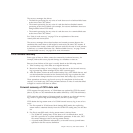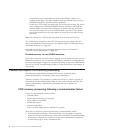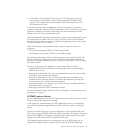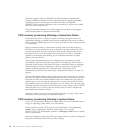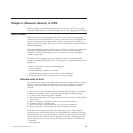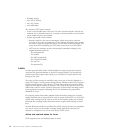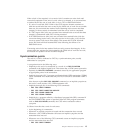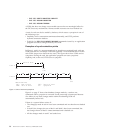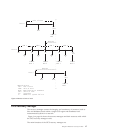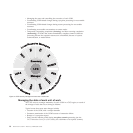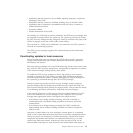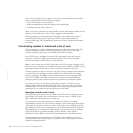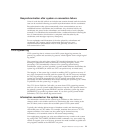When a lock is first acquired, it is an active lock. It remains an active lock until
successful completion of the unit of work, when it is released, or is converted into
a retained lock if the unit of work fails, or for a CICS or SMSVSAM failure:
v If a unit of work fails, RLS VSAM or the CICS enqueue domain continues to
hold the record locks that were owned by the failed unit of work for recoverable
data sets, but converted into retained locks. Retaining locks ensures that data
integrity for those records is maintained until the unit of work is completed.
v If a CICS region fails, locks are converted into retained locks to ensure that data
integrity is maintained while CICS is being restarted.
v If an SMSVSAM server fails, locks are converted into retained locks (with the
conversion being carried out by the other servers in the sysplex, or by the first
server to restart if all servers have failed). This means that a UOW that held
active RLS locks will hold retained RLS locks following the failure of an
SMSVSAM server.
Converting active locks into retained locks not only protects data integrity. It also
ensures that new requests for locks owned by the failed unit of work do not wait,
but instead are rejected with the LOCKED response.
Synchronization points
The end of a UOW is indicated to CICS by a synchronization point, usually
abbreviated to syncpoint.
A syncpoint arises in the following ways:
v Implicitly at the end of a transaction as a result of an EXEC CICS RETURN
command at the highest logical level. This means that a UOW cannot span tasks.
v Explicitly by EXEC CICS SYNCPOINT commands issued by an application program
at appropriate points in the transaction.
v Implicitly through a DL/I program specification block (PSB) termination (TERM)
call or command. This means that only one DL/I PSB can be scheduled within a
UOW.
Note that an explicit EXEC CICS SYNCPOINT command, or an implicit syncpoint at
the end of a task, implies a DL/I PSB termination call.
v Implicitly through one of the following CICS commands:
– EXEC CICS CREATE TERMINAL
– EXEC CICS CREATE CONNECTION COMPLETE
– EXEC CICS DISCARD CONNECTION
– EXEC CICS DISCARD TERMINAL
v Implicitly by a program called by a distributed program link (DPL) command if
the SYNCONRETURN option is specified. When the DPL program terminates
with an EXEC CICS RETURN command, the CICS mirror transaction takes a
syncpoint.
It follows from this that a unit of work starts:
v At the beginning of a transaction
v Whenever an explicit syncpoint is issued and the transaction does not end
v Whenever a DL/I PSB termination call causes an implicit syncpoint and the
transaction does not end
v Whenever one of the following CICS commands causes an implicit syncpoint
and the transaction does not end:
– EXEC CICS CREATE TERMINAL
Chapter 2. Resource recovery in CICS 15



